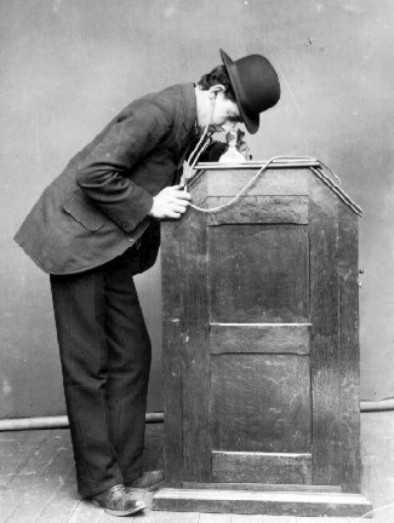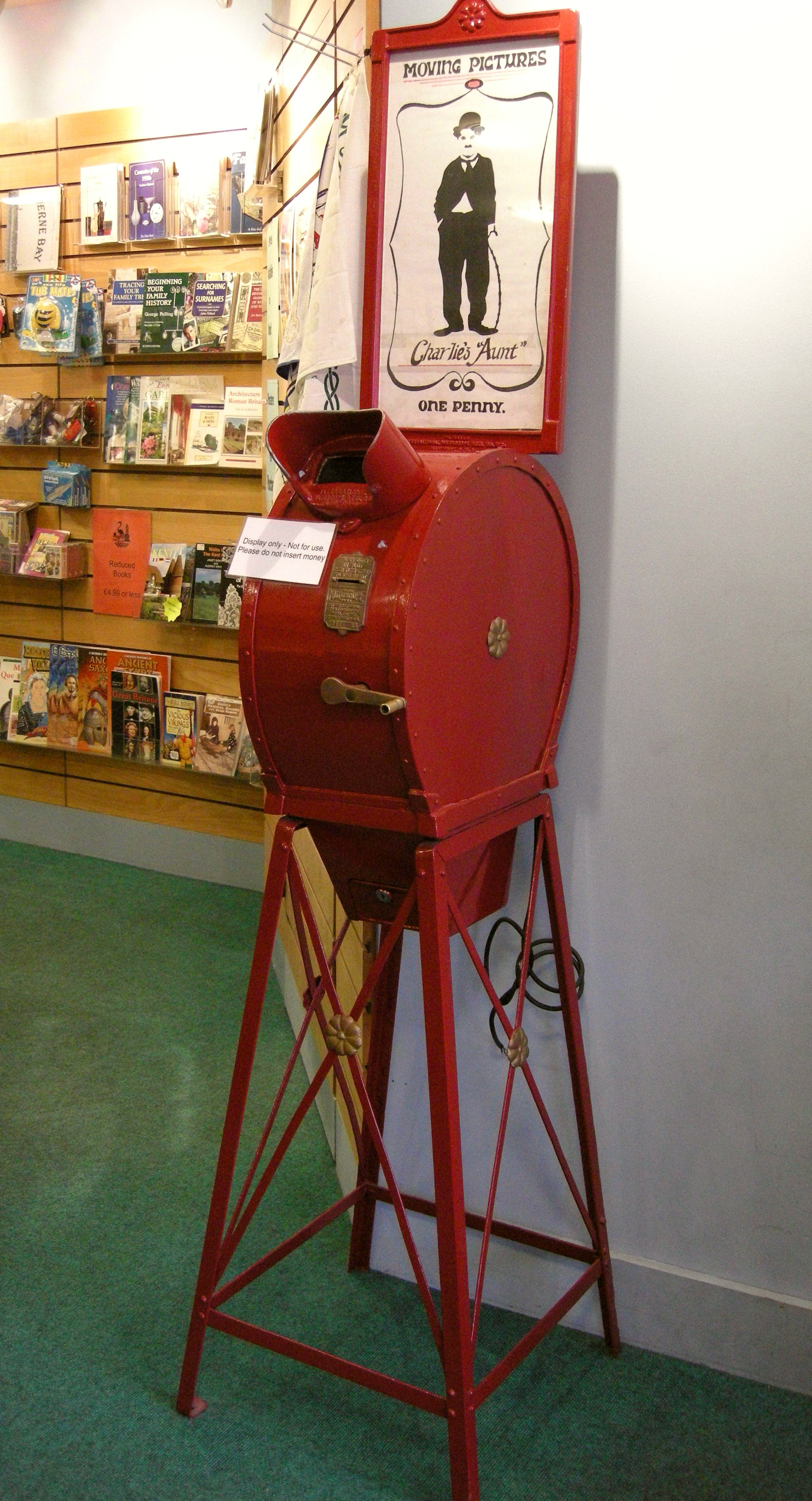Animation Assignment 1
Persistence of vision
Persistence of vision is the term given when a series of single discrete images are taken together when they are played at a certain speed (frame rate) they give the illusion of movement. the speed is measured in frames per second the lowest average frame rate is 12 frames per second if the frame rate is lower than this then the clip will appear less smooth and will look more like single images than a moving video, the professional English frame rate for stop frame animation is 24 frames per second whilst the American professional frame rate is 29.97 frames per second, this higher the frame rate the smoother and more fluent the clip will be however it does shorten the duration of the clip as it is sped up more. an example of persistence of vision is Eadweard Muybridge's moving horse this is not actually a video but is a series of images sped up to make it look like a video. here is the video of the animation.
Original Animation
When animation was first made it was not actually made with film or cameras it was made with physical images and with the idea of illusion, a long strip of images what be placed into a spinning barrel called a zoetrope every image would have a slight change in it when the device spins and you look through the slits the images appear to move make a short moving animation this device was used with the idea of persistence vision. Simon Stampfer one of the inventers of the phenakitoscope suggested that a series of images could be placed on either a disc, cylinder or a loop of paper stretched around 2 parallel rollers, so Stampfer decided he would publish the idea. Milton Bradley an american game board company advertised a variant of the zoetrope that had slits in.
Thaumatrope
This illusion was made be 2 different images on each side of a coin shaped paper or image it would be spun quickly with string and the 2 images would appear to merge together to form 1 image. The thaumatrope was discovered in the Chauvet Cave in France.
Phenakitoscope
The phenakistoscope was an early animation device that used the persistence of vision principle to create an illusion of motion. This device was a wheel with several images on it that were slightly different to each other when the wheel was span the images would appear to move. The phenakitoscope was invented by a Belgian physicist Joseph Plataeu with Simon Stampher.
Kinetoscope
Kinetoscope, forerunner of the motion-picture film projector, invented by Thomas A. Edison and William Dickson of the United States in 1891. In it, a strip of film was passed rapidly between a lens and an electric light bulb while the viewer peered through a peephole. The film was transported round the Kinetoscope by an electrically driven sprocket wheel at the top of the box which engaged corresponding sprocket holes in the 35mm film. Illuminating the film was an electric lamp which was separated by a shutter providing intermittent light illuminating each frame in turn and producing a moving image.
The Mutoscope was originally made by Herman Claser the idea was mainly inspired by the flick-book idea this helped to inspire his idea of the Mutoscope this device was officially finished and patented on November 21st 1894. So it was similar to the flip-book design as it had a sequence of photographs that were placed around the outside of the drum inside the shell, turning the handle on the contraption would flick through the photos rapidly similar to a flick-book this would then create the movement as each photo would to slightly different/altered so that it would give the illusion of movement at high speeds. In this "scope" you would view through a peep hole similar to the Kinetoscope, however the difference between these devices is that the Kinetoscope relied on an electric motor when the Mutoscope is completely powered by the person turning the handle.
George Melies
George Melies is one of the first film makers to exist, he was a french illusionist who had a big interest in magic and he used that as an idea for his movies using certain ideas and special effects that he had in mind he used lots of different types of filming and photography such as time-lapse photography, multiple exposures and more.
Windsor McCay
Windsor McCay was a American cartoonist and animator best known for his original comic strips little Nemo and Gertie the dinosaur, his method of animation was known as roto-scoping which means he drew a series of images over and over with a slight change to them on each one when they were played through it would create what looked like movement using this technique he made loads of short animated movies. Winsor managed to create 10 animated movies between 1911 and 1921, he was inspired to attempt to create a movie by his son who used to bring back flip books this gave him the idea of the possibility of animated movies. For Winsor McCay's first animated movie (little nemo) he made four thousand drawings on rice paper for it to be created.
Lotte Reiniger

Lotte originally was inspired to become a famous actress however this never came to happen as a new career came along as when she was working with other actors and actresses she would make silhouettes of the people she was working with as she continued to do this she developed her skills at it very well which made her consider to become a animating filmmaker, as she grew older she started to try out animating animals such as rats. The first film Lotte Reiniger created was named "Das Ornament des verliebten Herzens" which is translated to "The ornament of the Enamoured Heart" a romance short piece that was highly received.
My Stop-Frame Animation Model



An example of some stop frame animation using clay is Wallace and Gromit this was a British comedy series created by Nick Park, he also created some full feature length movies of Wallace and Gromit such as Wallace and Gromit curse of the were-rabbit. Nick mad a huge profit of just over a million with a budget of only £11,000.
Windsor McCay
Windsor McCay was a American cartoonist and animator best known for his original comic strips little Nemo and Gertie the dinosaur, his method of animation was known as roto-scoping which means he drew a series of images over and over with a slight change to them on each one when they were played through it would create what looked like movement using this technique he made loads of short animated movies. Winsor managed to create 10 animated movies between 1911 and 1921, he was inspired to attempt to create a movie by his son who used to bring back flip books this gave him the idea of the possibility of animated movies. For Winsor McCay's first animated movie (little nemo) he made four thousand drawings on rice paper for it to be created.
Lotte Reiniger

Lotte originally was inspired to become a famous actress however this never came to happen as a new career came along as when she was working with other actors and actresses she would make silhouettes of the people she was working with as she continued to do this she developed her skills at it very well which made her consider to become a animating filmmaker, as she grew older she started to try out animating animals such as rats. The first film Lotte Reiniger created was named "Das Ornament des verliebten Herzens" which is translated to "The ornament of the Enamoured Heart" a romance short piece that was highly received.
Cel Based Animation
A cel is a sheet of transparent cellulose acetate used as a medium for painting animation frames. It is transparent so that it can be laid over other cels and a painted background, then photographed. The problem with this technique is that it is incredibly time consuming and a film would take a very long time to produce. The cel is an important innovation to traditional animation, as it allows some parts of each frame to be repeated from frame to frame, thus saving labor. A simple example would be a scene with two characters on screen, one of which is talking and the other standing silently. Since the latter character is not moving, it can be displayed in this scene using only one drawing, on one cel, while multiple drawings on multiple cels are used to animate the speaking character. An example of cel based animation would be snow white and the seven dwarfs.
My Stop-Frame Animation Model
A way of creating stop-frame animation is using clay. As you can see I have made a model of a clay man similar top the morph man, this design is how Wallace and Gromit used its movement for its animation it used clay models that has shots taken of them. My clay model is inspired by "morph" however I thought the "morph man" looked kind of boring the colours used were plain and his features were too ordinary which is why I chose a very vivid colour and big eyes that aren't in proportion to the eyes.



An example of some stop frame animation using clay is Wallace and Gromit this was a British comedy series created by Nick Park, he also created some full feature length movies of Wallace and Gromit such as Wallace and Gromit curse of the were-rabbit. Nick mad a huge profit of just over a million with a budget of only £11,000.
CUT OUT ANIMATION
Cut-out animation is a technique the uses stop-frame animation (taking pictures and slightly moving it) but it uses flat characters instead of 3D models, it also uses backgrounds and props that are flat paper and can be taken from images in newspapers and books. Now cut out animations are used using computers and backgrounds are digitally cut out of images for example south park uses this more modern technique with computers.
There are other types of cut-out animation such as silhouette animation which is a 2D animation that doesn't normally use colour it is normally formatted in monochrome (black and white), Lotte Reiniger used this type of cut-out animation a lot for her animations she would use paper cuttings for her characters that were silhouettes then she would use stop frame animation to create the movement of her characters.
Time lapse animation
Time-lapse photography is when the frame rate of the camera is set much lower than the viewing sequence frame rate. so as an example the camera might be set at 1 frame per second but the viewing frame rate might be 30 frames per second this makes the footage much shorter than just standard filming making time much shorter in a time lapse video so what might take a month for an apple to rot might only take a couple of minutes in a time lapse video this can give the viewer some really interesting effects as filming traffic can create lots of streaked blur light from the vehicles giving some very interesting and cool results.












Where is your second animation assignment holiday man?
ReplyDeleteVery good, but you need your second animation assignment
ReplyDelete